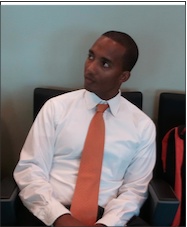
How big a deal is a college’s recruiting rank? We all follow it. We hang on every word and every move by potential high school recruits leading up to national signing day in February but how much does it really mean?
There are a host of factors that go into making a successful football team but most coaches will tell you that talent would be the most important factor. Talent can make a sub-par coach look great (ask Larry Coker) and lack of talent can make a damn good coach look like he needs to be filing for unemployment (ask anyone at Notre Dame prior to Charlie Weiss).
Gridironstuds.com researched the Rivals.com ranks of college football recruiting classes from 2002 to 2006 and matched them up with the performances of the teams four years out. So, I looked at the final AP polls from the years 2005-2008. Why did Gridironstuds.com choose four years? Gridironstuds.com chose four years because that would be the first year that anyone from the recruiting class could become a senior or redshirt junior. At that time, most players are playing and the school is likely getting the maximum benefit from the recruiting class in question.
Some interesting factors emerged from this research. First, in three of the four years researched, the national champion came from a team that finished in the top 3 in recruiting class rank by Rivals.com four years prior. Only in 2008, did the national champion come from a team that was not ranked in the top 3 in recruiting class four years earlier. 2008’s champ, the Florida Gators were ranked 15th in recruiting class in 2005.
Another interesting fact emerged from the research by Gridironstuds.com. Coaches who continuously received high rankings but did not end up in the Top 10 when that class matured, were shown the door. Miami, Fla ranked 5th, 4th and 7th in recruiting classes from 2003 to 2005 but failed to have a top 25 ranking in either 2006, 2007 or 2008. Their head coach Larry Coker was shown the door after the 2006 season. Current head coach Randy Shannon presided over the 2007 and 2008 teams and will be on the hot seat this season if the Hurricanes don’t appear in the Top 20 at season’s end. The 2003 Recruiting class had five teams that ranked in the Top 10 and failed to finish in the Top 25 four years later. Four of those five teams now have new head coaches. The 2004 recruiting class had two teams rank in the Top 10 but fail to finish in the Top 25 four years later. One of those two teams now has a new head coach. The 2005 recruiting class had an astonishing six teams in the Top 10 that failed to finish in the Top 25 four years later. Five of those six teams either fired their coach this past season or has a coach in place with less than 2 years coaching at the school. Morale of the story, if you are bringing in rich recruiting class and you are not in the Top 25 four years later, clean up your resume. Also, only legends really get to hang on to their jobs if their recruiting classes don’t evolve into high performers. Only Bobby Bowden, Steve Spurrier and Jeff Tedford have hung on to their jobs when their teams failed to make the Top 25 with a class that was ranked in the Top 10 four years before.
From the coaching their butt off category. Some teams performed really well without the benefit of highly ranked rivals.com classes four years before. In 2005, Penn St. finished 3rd in the final AP polls for 2005. Penn St.’s recruiting class in 2002 was ranked 21st by rivals. In 2006, Boise St. managed to finish 5th in the final AP poll with a 2003 recruiting class that ranked 101. Louisville finished 6th in the AP Poll that year with an ’03 class that ranked 35th. In 2004, Kansas finished ranked 7th in the final AP poll with a class ranked 51st while in 2008 TCU finished 7th with a 2005 class that ranked 54th.
Check out the tables below and draw your own conclusions on the importance of a recruiting class rank. If history is any indication, our 2009 champion will be either USC, Florida or Florida St. Those three teams finished 1, 2 and 3 in recruiting class rank for 2006.
Recruiting Class vs. AP Poll Performance
| Class 2003 Recruiting Rank | ||
| AP ’06 | ||
| 1 | LSU | 3 |
| 2 | Florida | 1 |
| 3 | USC | 4 |
| 4 | Oklahoma | 11 |
| 5 | Miami, Fla | NR |
| 6 | Georgia | 23 |
| 7 | NC State | NR |
| 8 | South Carolina | NR |
| 9 | Mississippi St. | NR |
| 10 | Texas A&M | NR |
| Class of 2004 Recruiting Rank | ||
| AP ’07 | ||
| 1 | USC | 3 |
| 2 | LSU | 1 |
| 3 | Florida St. | NR |
| 4 | Miami-FL | NR |
| 5 | Michigan | 18 |
| 6 | Georgia | 2 |
| 7 | Florida | 13 |
| 8 | Oklahoma | 8 |
| 9 | Ohio St. | 5 |
| 10 | Texas | 10 |
| Class of 2005 Recruiting Rank | ||
| AP ’08 | ||
| 1 | USC | 3 |
| 2 | Florida St. | 21 |
| 3 | Oklahoma | 5 |
| 4 | Tennessee | NR |
| 5 | Nebraska | NR |
| 6 | Michigan | NR |
| 7 | Miami-FL | NR |
| 8 | Texas A&M | NR |
| 9 | California | NR |
| 10 | Georgia | 13 |
| Class of 2006 Recruiting Rank | ||
| 1 | USC | |
| 2 | Florida | |
| 3 | Florida St. | |
| 4 | Georgia | |
| 5 | Texas | |
| 6 | Penn St. | |
| 7 | LSU | |
| 8 | Notre Dame | |
| 9 | Oklahoma | |
| 10 | Auburn |

Chad Wilson is a college football recruiting expert and creator of the GridironStudsApp which allows high school football players to gain exposure to college football coaches and fans. Wilson is a former college football player for the University of Miami (92-94) and Long Beach St. (’90-’91) and played briefly for the Seattle Seahawks (’95). He is also a former youth and high school football coach for over 15 years most recently for 5-A State of Florida Champs American Heritage. He runs All Eyes DB Camp a defensive back training company located in South Florida IG: @alleyesdbcamp. Wilson’s oldest son Quincy plays in the NFL for the New York Giants and his younger son plays cornerback for the Arizona Cardinals.



